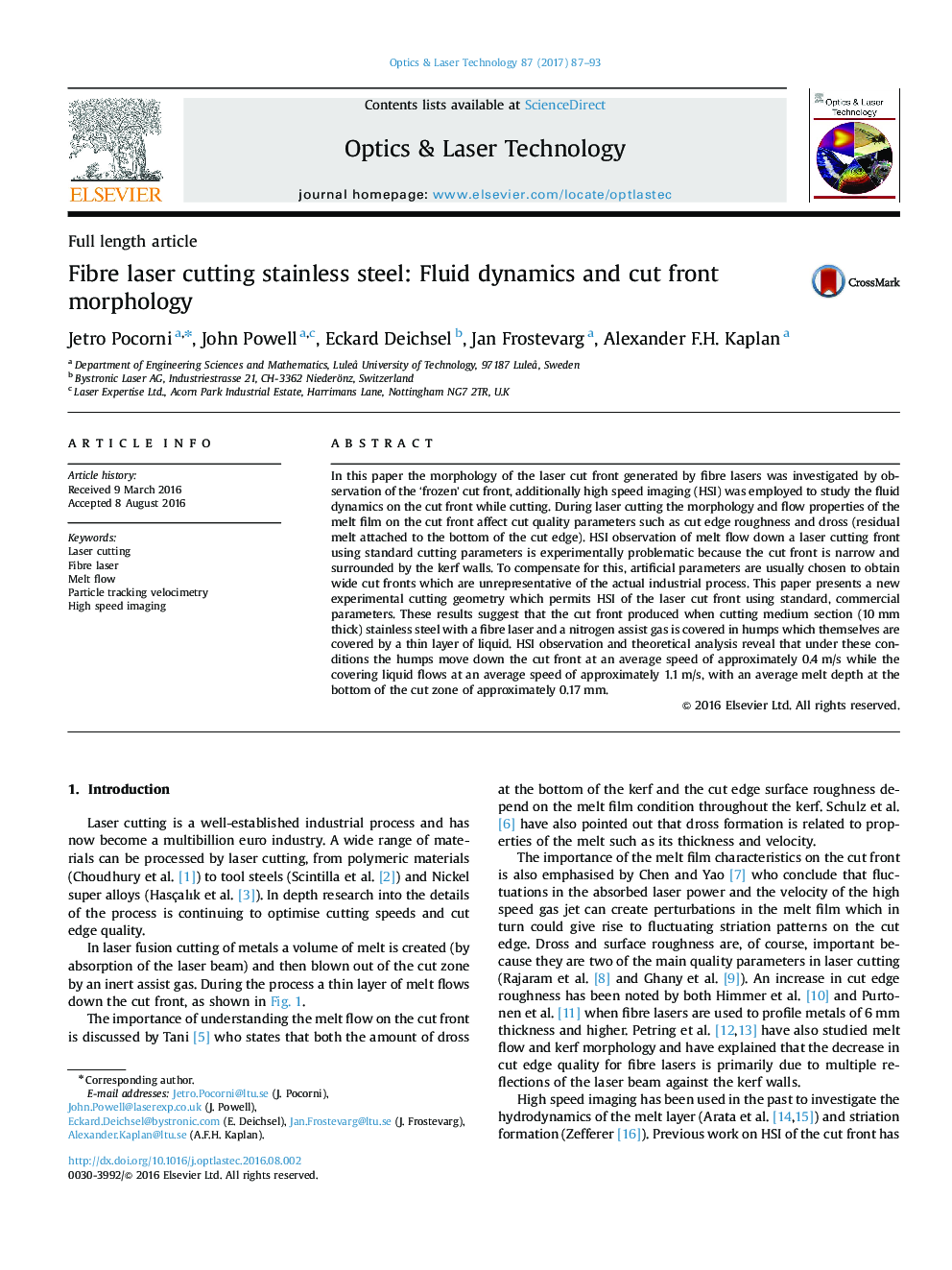| کد مقاله | کد نشریه | سال انتشار | مقاله انگلیسی | نسخه تمام متن |
|---|---|---|---|---|
| 733239 | 1461612 | 2017 | 7 صفحه PDF | دانلود رایگان |
• The fibre laser cut front is covered in moving humps under a faster moving liquid.
• High speed image observation of laser cut front with new experimental technique.
• Two complementary ways of calculating flow rates in laser cutting.
• Sporadic hump generation decreases cut quality.
In this paper the morphology of the laser cut front generated by fibre lasers was investigated by observation of the ‘frozen’ cut front, additionally high speed imaging (HSI) was employed to study the fluid dynamics on the cut front while cutting. During laser cutting the morphology and flow properties of the melt film on the cut front affect cut quality parameters such as cut edge roughness and dross (residual melt attached to the bottom of the cut edge). HSI observation of melt flow down a laser cutting front using standard cutting parameters is experimentally problematic because the cut front is narrow and surrounded by the kerf walls. To compensate for this, artificial parameters are usually chosen to obtain wide cut fronts which are unrepresentative of the actual industrial process. This paper presents a new experimental cutting geometry which permits HSI of the laser cut front using standard, commercial parameters. These results suggest that the cut front produced when cutting medium section (10 mm thick) stainless steel with a fibre laser and a nitrogen assist gas is covered in humps which themselves are covered by a thin layer of liquid. HSI observation and theoretical analysis reveal that under these conditions the humps move down the cut front at an average speed of approximately 0.4 m/s while the covering liquid flows at an average speed of approximately 1.1 m/s, with an average melt depth at the bottom of the cut zone of approximately 0.17 mm.
Journal: Optics & Laser Technology - Volume 87, January 2017, Pages 87–93
